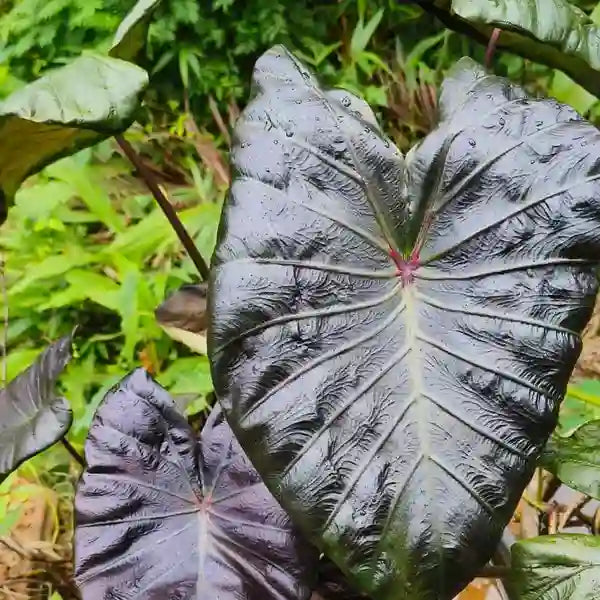
Scrab Plant
Selling Part : A Rhizome | Secure Packing | Free Delivery
It seems there might be a slight misunderstanding in the term "scrab plant." Based on the search results, it's highly probable you're referring to either:
Here's a comprehensive guide care for scrab :
"Scrub" as in natural scrubland/shrub vegetation: This isn't a single plant but a type of habitat.
"Scab" as in a plant disease: This is a fungal or bacterial issue, not a plant itself.
"Crab" or "Crabapple" plant: These are common terms for a type of tree.
Given the context of "plant care," I will provide information on Crabapple trees, as "scrab" might be a typo for "crab." If you were indeed asking about "scrub" (the habitat) or "scab" (the disease), please clarify!
Crabapple Tree Care (Malus species)
Crabapple trees are popular ornamental trees known for their beautiful spring blossoms, attractive fruit, and often vibrant fall foliage. They are relatively low-maintenance once established, but proper care ensures their health and vigor.
1. Light:
Full Sun: Crabapple trees thrive in full sun, meaning at least 6 hours of direct sunlight per day. This is crucial for abundant flowering and fruiting. Some cultivars can tolerate partial shade, but flowering may be reduced.
2. Watering:
Establishment: Young crabapple trees need consistent watering, especially during their first few years, to establish a strong root system. Water deeply and regularly (e.g., once a week if there's no significant rainfall) to moisten the soil to a depth of 6-12 inches.
Mature Trees: Once established, crabapples are fairly drought-tolerant. They generally only need supplemental watering during extended dry periods or severe heat. About 1 inch of water per week (from rain or irrigation) is a good general guideline.
Avoid Overwatering: Ensure good drainage to prevent waterlogging, which can lead to root rot.
3. Soil:
Well-Draining: Crabapples prefer rich, loamy, well-draining soil. They do not like consistently wet feet.
pH: Slightly acidic to neutral soil (pH 5.5 to 6.5) is ideal.
Amendments: When planting, amending the soil with organic matter like compost can improve drainage and fertility.
Mulch: Apply a 2-4 inch layer of organic mulch (like wood chips or pine bark) around the base of the tree, keeping it a few inches away from the trunk. Mulch helps retain soil moisture, regulate soil temperature, suppress weeds, and slowly adds nutrients as it breaks down.
4. Temperature and Humidity:
Climate: Most crabapple varieties are best suited for USDA Hardiness Zones 4-8. They require a period of cold temperatures (below 45°F or 7°C) for proper dormancy and flowering.
Humidity: While they can tolerate various humidity levels, high humidity combined with warm temperatures can increase the risk of fungal diseases. Good air circulation helps.
5. Fertilizing:
Mature Trees: Established crabapple trees generally don't require heavy fertilization if the soil is healthy.
Spring Application: A light application of balanced granular fertilizer or compost around the dripline in early spring can be beneficial, especially if growth seems slow or foliage is pale. Follow product instructions carefully.
Avoid Excessive Nitrogen: Too much nitrogen can promote leafy growth at the expense of flowers and fruit, and can make the tree more susceptible to diseases like fire blight.
6. Pruning:
Timing: The best time for major pruning is late winter or early spring while the tree is dormant. Light shaping and removal of dead/damaged branches can be done anytime.
Purpose:
Remove Dead, Diseased, or Damaged Branches: This improves overall tree health and prevents the spread of disease.
Improve Air Circulation: Thin out crowded branches to allow for better airflow, which helps prevent fungal diseases.
Shape and Structure: Prune to maintain a desirable shape and strong central leader, if applicable to the cultivar. Remove crossing or rubbing branches.
Remove Suckers and Water Sprouts: These vigorous, upright shoots that grow from the base or branches of the tree should be removed.
Technique: Make clean cuts just outside the branch collar (the swollen area where the branch joins the trunk or another branch). Avoid leaving stubs or cutting too close to the trunk.
7. Pests and Diseases:
Crabapple trees can be susceptible to several issues, though many modern cultivars are bred for disease resistance.
Common Diseases:
Scab: (This is likely what "scrab" referred to if it wasn't a typo for crab!) Causes dark, scabby lesions on leaves, fruit, and twigs. Look for resistant varieties.
Fire Blight: Bacterial disease causing scorched-looking branches. Prune out infected branches well into healthy wood and disinfect tools.
Powdery Mildew: White, powdery coating on leaves.
Rust: Orange, rust-colored spots on leaves.
Common Pests: Aphids, spider mites, scale, Japanese beetles, and borers can sometimes be an issue.
Prevention and Treatment:
Resistant Varieties: Choose disease-resistant cultivars when purchasing.
Good Air Circulation: Proper pruning helps prevent many fungal issues.
Sanitation: Rake up and dispose of fallen leaves and fruit to remove overwintering disease spores.
Monitoring: Regularly inspect your tree for signs of pests or diseases.
Treatment: Use appropriate fungicides or insecticides if necessary, following product instructions carefully. Consult with a local agricultural extension office for specific recommendations for your region.
By providing the right conditions and consistent care, your crabapple tree can be a beautiful and rewarding addition to your landscape.

